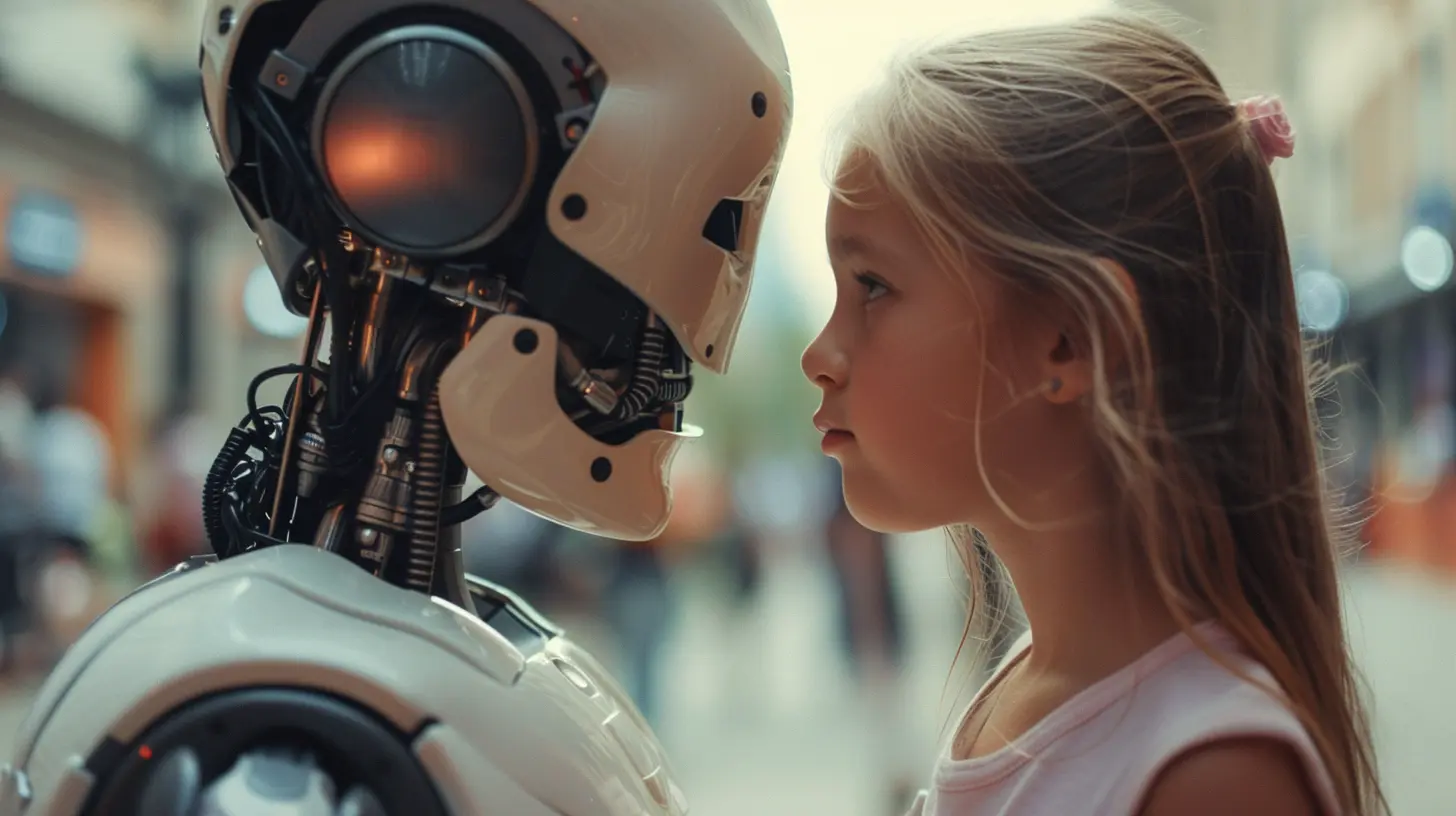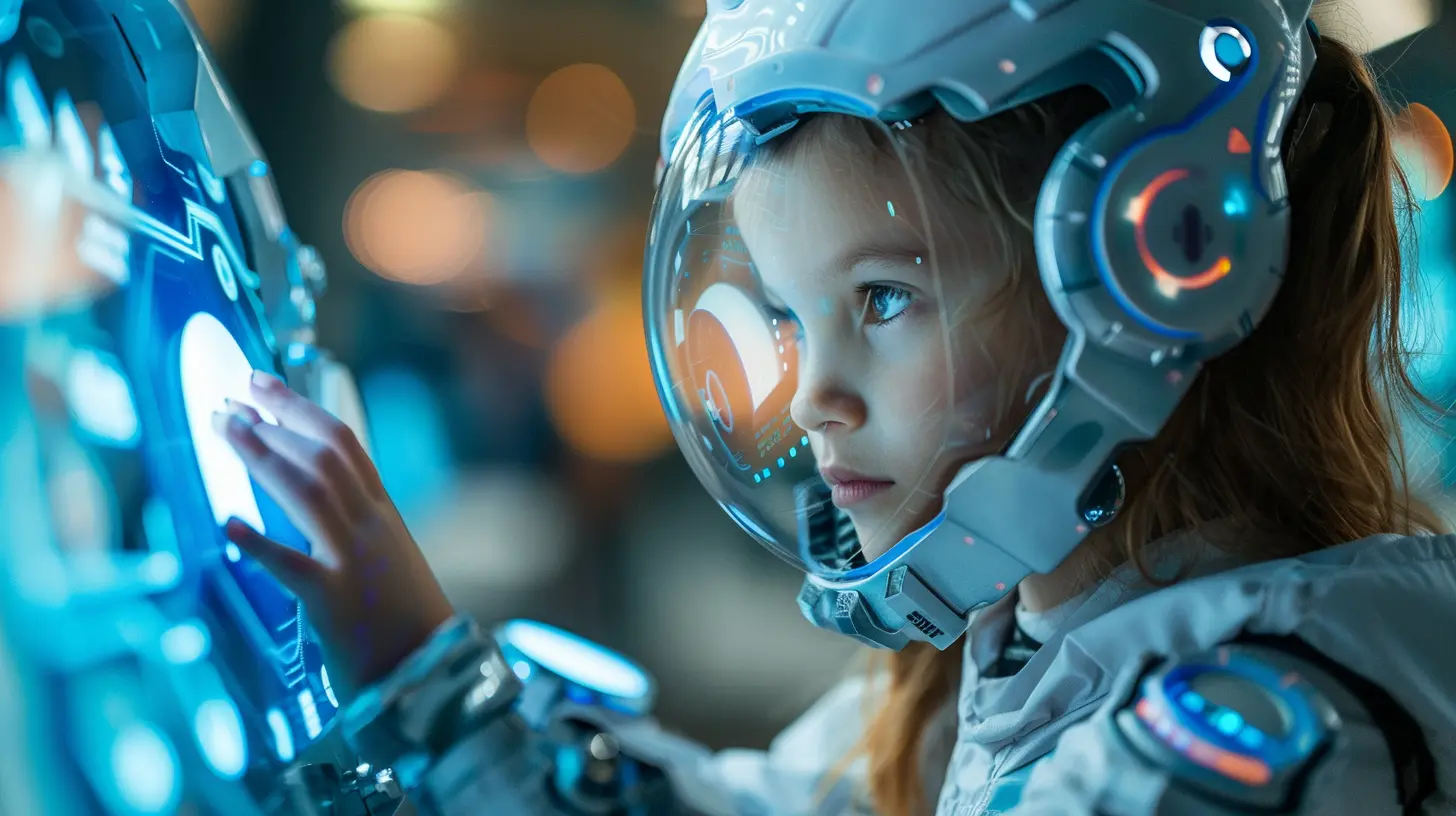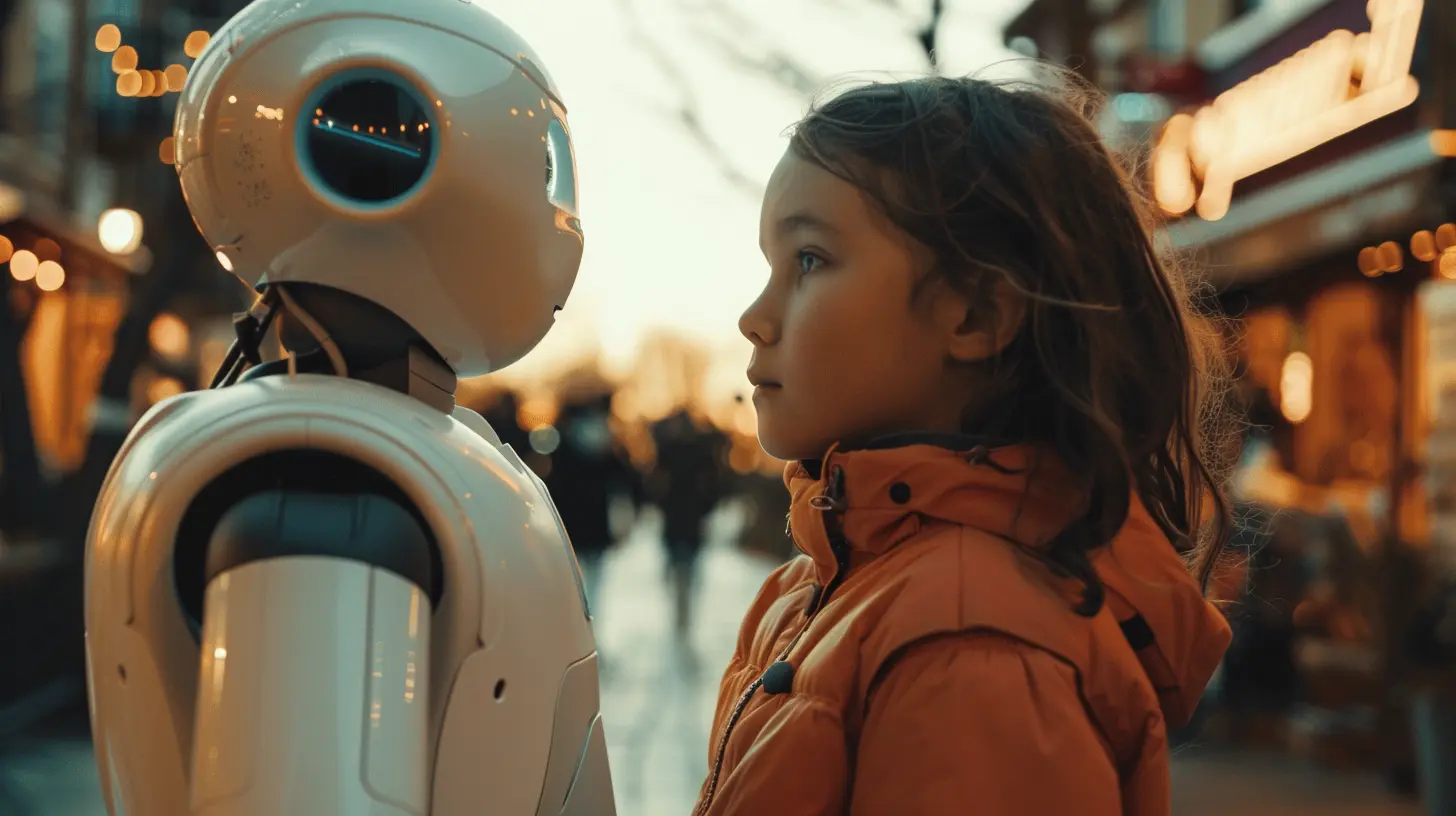Introducing AI to Your Kids: What Every Parent Should Know
4 April 2025
Artificial Intelligence (AI) is no longer just the stuff of sci-fi movies. It’s here, shaping our daily lives in ways we might not even realize. From voice assistants like Alexa and Siri to personalized YouTube recommendations, AI is seamlessly woven into our children’s world.
But as a parent, you might be wondering—how do I introduce AI to my kids in a way that’s safe, fun, and educational? Should I be concerned about screen time, privacy, or even the ethical side of AI?
Don’t worry! In this guide, we’ll break down everything you need to know about introducing AI to your children in a way that empowers them while keeping them informed and safe. 
Why Should Kids Learn About AI?
AI isn’t just a passing trend; it's shaping the future. The earlier kids understand AI, the better prepared they'll be for a world where it's part of everyday life.1. AI is Everywhere
Think about it—AI is already impacting the way we shop, communicate, and even learn. If your child watches Netflix or asks Google questions, they’re interacting with AI. Teaching them about it early helps them grasp how technology works rather than just consuming it mindlessly.2. It Encourages Critical Thinking
When kids understand AI, they naturally start questioning how machines work. They begin to ask: Can AI think like humans? How does it know what I like? What happens to my data? These questions encourage logical reasoning, problem-solving, and curiosity—skills that go beyond just tech.3. Prepares Them for Future Careers
Many jobs in the future will involve AI in some way. Whether your child becomes a doctor, teacher, artist, or scientist, AI will likely play a role. Giving them a solid foundation now ensures they’ll be ready for the tech-driven future.
How to Introduce AI to Your Kids
Now that we understand why AI matters, let's talk about how to introduce it to kids in an engaging way.1. Start with Simple Conversations
You don’t need a degree in computer science to talk about AI with your kids. Start by discussing things they already know.For example, ask them:
- "Have you noticed how YouTube recommends videos you might like?"
- "Ever wondered how Alexa understands what we ask?"
Use real-life examples to explain that AI learns from patterns—just like how they learn from experience!
2. Use AI-Powered Toys & Games
There are amazing AI-powered toys and games designed to introduce kids to artificial intelligence in a fun way. Some great options include:- Cozmo & Vector Robots – These cute little robots have personalities and can interact with kids while teaching programming basics.
- Scratch (MIT's Coding Platform) – While not fully AI, Scratch helps kids understand how machines process commands.
- Google’s Teachable Machine – A beginner-friendly tool for kids to explore how AI can recognize images, sounds, and more.
By interacting with AI-powered tools, children grasp concepts hands-on rather than just hearing about them.
3. Encourage Coding & AI Exploration
Coding and AI go hand in hand. Teaching kids to code is like teaching them a new language—one that helps them communicate with machines.Platforms like:
- Code.org
- Tynker
- Scratch
- Kodable
…make programming accessible to kids of all ages. Many of these platforms include games that teach the logic behind AI. 
Addressing Common AI Concerns
Parents often worry about AI’s impact on children, and rightfully so. Like any technology, AI has its risks. Here’s how to navigate them:1. Screen Time & Balance
One of the biggest concerns is that AI-powered devices might increase screen time. The key? Moderation is everything! Encourage active learning over passive consumption. Instead of just watching AI-generated YouTube videos, have your child interact with AI in educational ways like coding or problem-solving games.2. Privacy & Data Safety
AI collects data to function. Whether it’s a smart speaker or a chatbot, information is often stored. Teach kids the importance of:- Not sharing personal details with AI bots.
- Being aware of privacy settings in AI-powered apps.
- Questioning what data is being collected and why.
Make online safety a family discussion rather than a rule they blindly follow.
3. Understanding AI Bias & Ethics
AI isn’t perfect because it learns from human-created data—which can be biased. Explain to kids that AI makes mistakes and doesn’t always have the "right" answers. Teach them to question what they see, ask where AI gets its information, and develop critical thinking skills.A simple example? Point out how sometimes autocorrect gets words wrong. It shows how AI isn't always 100% reliable! 
Fun AI Activities for Kids
Want to make AI learning exciting? Here are some hands-on activities you can do with your child:1. AI Chatbot Conversations
Encourage your child to chat with AI like ChatGPT or Google Assistant and see how it responds. Challenge them to ask tricky questions and notice where AI gets things right—or wrong!2. Teach AI with “Teachable Machine”
Google’s Teachable Machine lets kids train an AI model using pictures, sounds, or poses. They can see how AI learns patterns—a great hands-on lesson.3. AI Storytelling
Let AI help create stories! Websites like StoryAI can generate stories based on prompts. Compare an AI-generated story with one they write themselves—what’s different? Does AI have a creative touch?4. Robot Challenges
If you have an AI-powered robot, give your child a challenge like making the robot find an object or respond with certain actions. Experiment, problem-solve, and have fun!How Parents Can Stay Informed
AI is evolving fast, and keeping up can feel overwhelming. Here are a few tips to stay informed:- Follow kid-friendly tech resources like Common Sense Media for AI-related recommendations.
- Join parenting forums where discussions on AI and kids happen.
- Engage with your child's AI learning—ask them what they’re exploring!
- Set household guidelines around AI use, just as you would with TV and video games.
Being proactive helps ensure AI remains a positive tool rather than a mindless distraction.
The Future of AI & Your Child
AI is here to stay, and rather than fearing it, we can empower our kids to use it responsibly. By teaching them how AI works, balancing screen time, prioritizing privacy, and encouraging critical thinking, we help them become smart digital citizens.Think of AI like fire—when controlled, it’s a helpful tool. When unchecked, it can be risky. As parents, our role is to guide our children so they can safely harness its potential.
So, why not start today? Spark a conversation, explore an AI game, or try a coding project together. The future is AI-driven, and your child will be ready to embrace it with confidence!
all images in this post were generated using AI tools
Category:
Tech And KidsAuthor:

Steven McLain
Discussion
rate this article
6 comments
Renee Franco
Introducing AI to your kids is like giving them a magic wand! But remember, just like any wizard, they might accidentally turn the cat into a chatbot or ask Alexa for a snack at 3 AM. Embrace the chaos and stock up on snacks for your future robot overlords!
April 14, 2025 at 4:26 PM

Steven McLain
Absolutely! Embracing AI can spark creativity in kids—just be prepared for some quirky moments along the way!
Tank Abbott
Embracing AI with your kids opens doors to creativity, learning, and innovation! By guiding them through this digital landscape, you empower them to navigate the future confidently. Let curiosity flourish and turn tech into a tool for growth, sparking their imaginations every step of the way!
April 11, 2025 at 3:25 PM

Steven McLain
Absolutely! Embracing AI with children fosters creativity and equips them with essential skills for the future. It’s a powerful tool for exploration and growth!
Brick Lynch
As a parent, I find introducing AI to my kids both exciting and daunting; it’s crucial to guide their understanding responsibly.
April 10, 2025 at 4:24 AM

Steven McLain
Thank you for sharing your perspective! Guiding children in their understanding of AI is indeed essential for fostering responsible use and curiosity.
Avery McGuffin
Great article! It's crucial for parents to understand AI's benefits and risks, ensuring kids engage with technology responsibly and develop critical thinking skills.
April 9, 2025 at 3:36 PM

Steven McLain
Thank you! I'm glad you found it valuable. It's essential for parents to guide their children in navigating AI thoughtfully.
Phoebe McKinstry
Introducing AI to children can be a double-edged sword. While it fosters creativity and problem-solving skills, parents must address ethical considerations and screen time limits. Encouraging a balanced approach, coupled with open discussions about technology's implications, ensures that kids harness AI positively and responsibly.
April 8, 2025 at 4:27 PM

Steven McLain
Thank you for your insightful comment! Balancing creativity with ethical considerations is crucial when introducing AI to children. Open discussions and mindful limits will help guide them in using technology responsibly.
Sylas Underwood
This article is a must-read for parents looking to navigate the complexities of introducing AI to their children. It highlights essential considerations, encourages open discussions, and emphasizes the importance of balancing technology with real-life experiences. A thoughtful approach can empower kids to use AI responsibly and creatively. Great insights!
April 7, 2025 at 4:58 PM

Steven McLain
Thank you for your thoughtful feedback! I'm glad you found the article valuable for parents navigating AI with their children. Your insights on balance and open discussions are spot on!




